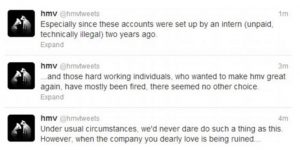— July 26, 2019
We live in the most technologically-advanced era in human history. It would be reasonable to assume, therefore, that businesses are moving faster than ever, assisted by these technological improvements.
In fact, there’s evidence to the contrary: the pace of business is slowing down.
One survey of four hundred recruiters showed that in 2015 it took an average of sixty-three days to hire a new employee, up from forty-five days just five years earlier. Other surveys showed that, in that same period, the time to complete an office information technology project rose by more than 10 percent and the time to close a business-to-business sale was up 22 percent.
Tom Monahan is the CEO of CEB (now part of Gartner), the consulting firm that conducted those surveys. He attributes much of the slowdown to an increase in corporate control and concern for risk management. Issues like regulatory compliance, privacy protection, and data security have resulted in a proliferation of processes.
The firm’s research also found that collaboration needs were on the rise. As firms move to flatter, less hierarchical structures, the need for peer interaction increases. CEB found that 60 percent of those surveyed interacted with ten or more co-workers daily, and half of those needed to engage with twenty or more daily.
Monahan makes it clear that bureaucratic processes and out-of-control collaboration are behind the slow pace at many companies. In other words, bureaucracy and endless meetings create friction that interferes with the smooth running of companies, preventing people from doing what needs to be done.
A familiar way of describing friction within an organization is “red tape.” Often associated with bureaucratic procedures in government and business, the term has uncertain origins. The earliest uses in a paperwork context trace back to sixteenth-century and later Europe, where red tape was used to bind religious and administrative documents. Charles Dickens, in his 1850 novel, David Copperfield, wrote, “Britannia, that unfortunate female, is always before me, like a trussed fowl: skewered through and through with office-pens, and bound hand and foot with red tape.”
Although red tape has long been associated with legal or important documents, the derogatory context of bureaucratic procedures and delays may have its roots in the United States. After the Civil War, getting access to veterans’ service and pension records was a tedious process. These records were, as you might guess, secured with red tape.
Another term for internal friction, and one of my favorites, is the much more recent “organizational drag.” Like friction, the term “drag” has scientific origins. Drag is a form of friction found when an object moves through a gas or liquid, acting in the opposite direction of that movement. A bullet shot into water, for example, will slow down and eventually stop due to drag. In contrast, a space probe could travel indefinitely in the vacuum of space because of the absence of drag.
The concept of organizational drag was popularized by Michael Mankins and Eric Garton, Bain & Company partners and key players in the consulting firm’s Organization practice. Their thesis is that companies have established procedures to allocate financial capital, but nothing similar for human capital. Mankins and Garton believe that an organization’s most valuable resource is its people, specifically their time, talent, and energy. This resource is often squandered in attending pointless meetings, handling irrelevant e-mail, and following bureaucratic procedures. They classify all of these time sinks under the term “organizational drag.”
Tackling Workplace Friction
If friction at work consumes so many worker-hours, what should we do about it? C. Northcote Parkinson, author and creator of Parkinson’s Law, posited that “Work expands so as to fill the time available for its completion.” The more time we allocate to tasks, the longer they take us.
Parkinson was an early critic of meetings, too. He introduced the Law of Triviality, which states that the time spent on any agenda item will be in inverse proportion to the sum (of money) involved. He theorized that, while committee members feel unqualified to criticize an expenditure of tens of millions of dollars, everyone has an opinion on minor matters such as the construction of a small shed or how much should be spent on refreshments.
Tom Peters, the highly outspoken author of In Search of Excellence and The Excellence Dividend, also has strong opinions about bureaucracy. He doesn’t mince words when he says, “Giant companies are stinkers when it comes to long-term performance.” Peters cites work by McKinsey’s Richard Foster that studied the performance of a thousand large companies over a forty-year period. None of the survivors outperformed the market as a whole. Even more perplexing, the companies who had been around the longest reported the worst performance.
At first glance, it seems counterintuitive that these long-lived companies underperform their peers. To survive for decades while other firms perished suggests that they are doing something right. The problem, Foster posited, lies in their success: the very structures needed to control existing operations aren’t conducive to the flourishing of new ideas.
In other words, bureaucracy comes with growth, and we need to consciously fight it, otherwise it will become embedded in our organizations. As early as 1987, Peters urged managers to, “Poke fun at bureaucratic behavior, starting with your own.” Turning bureaucracy-busting into something that’s fun draws attention to the problem and keeps people engaged. He suggested having an impromptu office party at the incinerator highlighted by the burning of boxes of unread reports.
Another suggestion is a recurring theme among foes of bureaucracy. Peters said everyone should “continuously nominate forms and irritating regulations that they want eliminated.” These nominations would be reviewed by a “high court” of mostly line and junior people who would be required to accept at least 50 percent of the recommendations. Periodically, there would be an award ceremony with “prizes for all whose Mickey Mouse regulation-removal ideas have been accepted.”
Bottom line: if you allow red tape to multiply unchallenged in your organization, it will soon become so commonplace that it throttles growth and productivity. The only way to prevent this from happening is to actively cut through the jungle of bureaucracy before it becomes impassable.
***
This article was adapted from the book Friction: The Untapped Force That Can Be Your Most Powerful Advantage by Roger Dooley.
Business & Finance Articles on Business 2 Community
(42)







